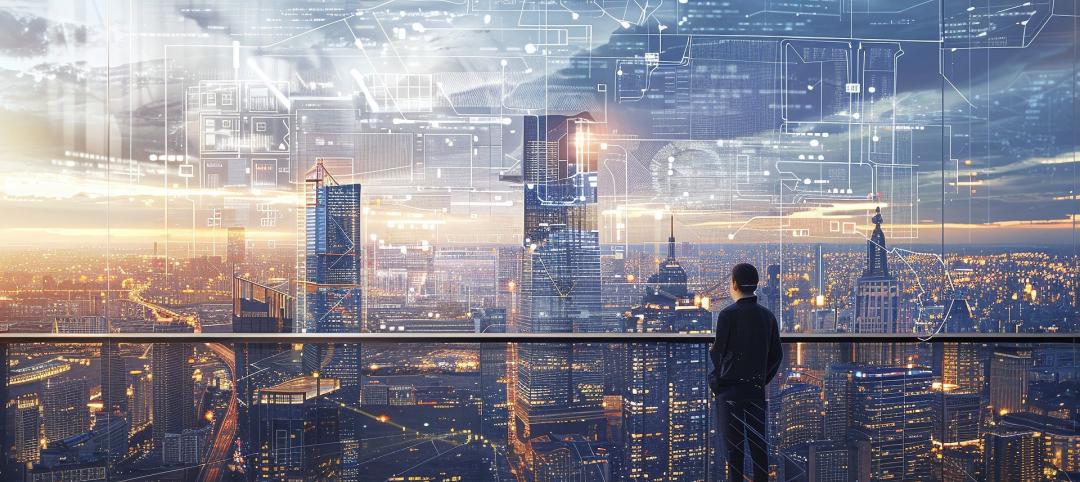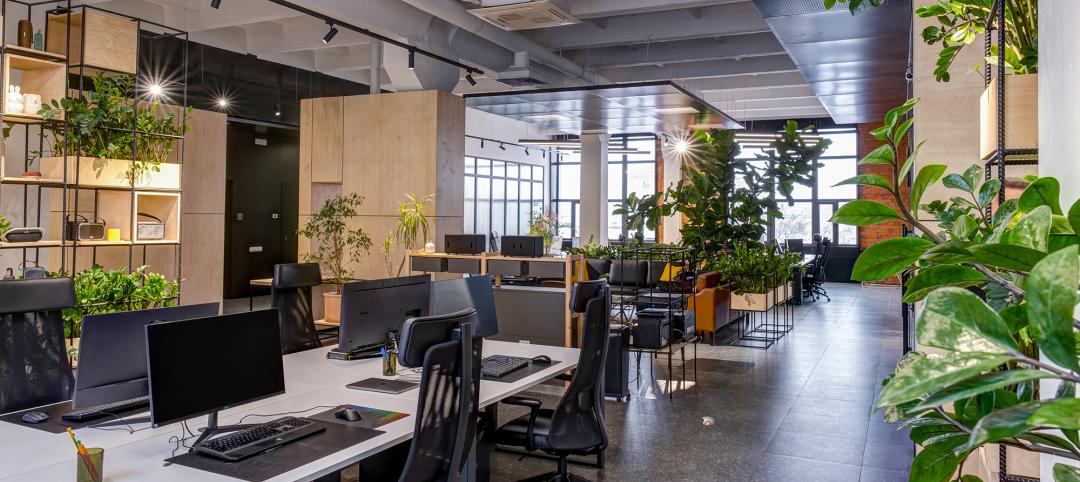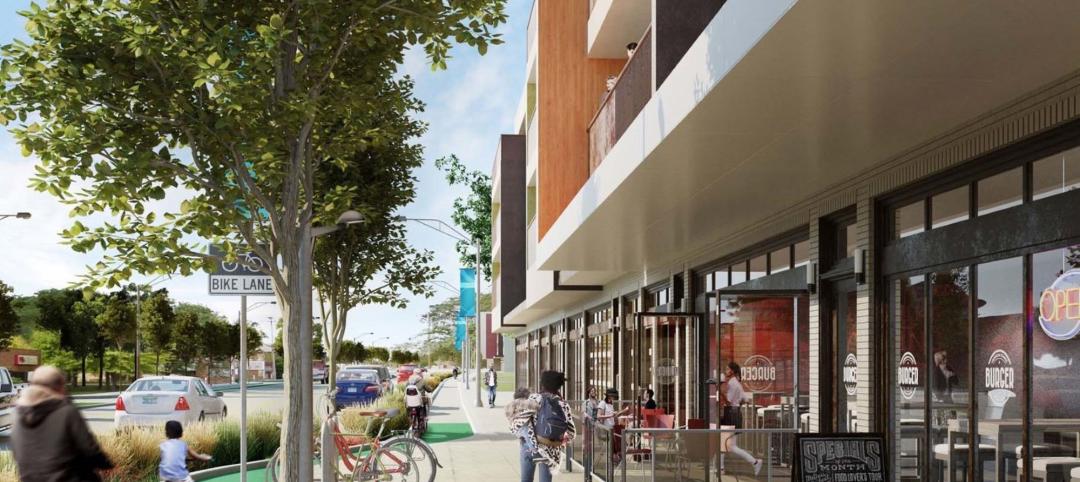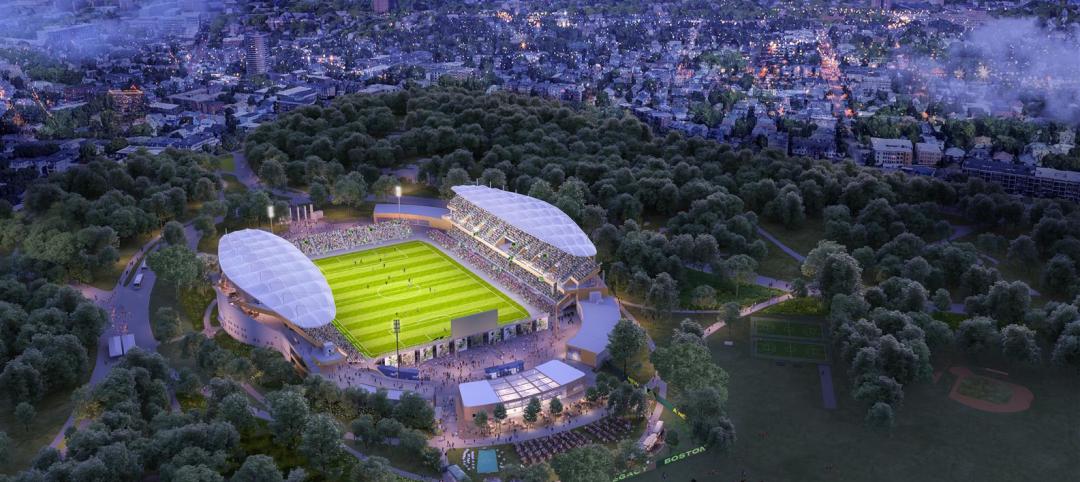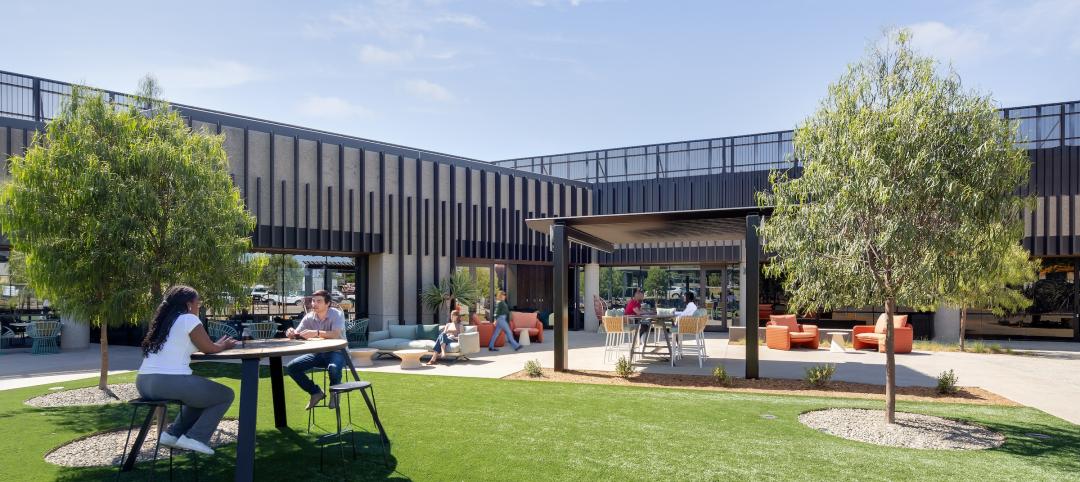Energy-efficient building design starts with the building envelope, but the building systems have a tremendous impact on energy use as well.
Commercial buildings consume a large portion of energy in the United States. The U.S. Energy Information Administration (EIA) says this is due to the increased use of existing electrical equipment and the introduction of new types of office equipment and telecommunication equipment. In fact, office equipment is one of the fastest-growing electrical uses in America, with 7% of total commercial energy use coming from these devices.
However, the energy consumption from office equipment is just a fraction of the total energy use in an office building. According to the EIA, 17% of a building’s overall energy use is for lighting, while 16% is for ventilation, 15% for cooling, and 2% for space heating. The EIA also found that elevator energy consumption represents about 5% of a building’s energy use—and that hydraulic-based elevator systems used in low-rise buildings are far less efficient than traction-based systems used in mid- and high-rise structures. (New elevator technology can reduce energy use by 30-40%.)
While overall energy consumption continues to increase in commercial buildings, owners and developers can make significant progress in reducing energy use by reevaluating and replacing older building systems, and specifying the latest energy-efficient systems for new builds.
Equipment standards of efficiency have been one of the most successful policies used by states and the federal government to reduce energy usage. The American Council for an Energy Efficient Economy (ACEEE) found that about 70% of potential new energy savings could come from updated water heaters, central air conditioners, heat pumps, electric motors, refrigerators, freezers, and commercial rooftop air conditioners.
Luckily, for building owners, advancements in HVAC systems, elevators, escalators and uninterruptible power supply (UPS) systems have resulted in modern building systems that improve performance, maximize reliability, and increase occupant comfort, while reducing energy usage. Let us look at some of the advancements in these building systems categories:
HVAC systems
Traditional HVAC systems are known for being imprecise and inefficient. To regulate the temperature of a space, hot and cold air need to be pumped into the spaces individually until the optimal temperature is reached. This not only leads to moments when spaces are too hot or too cold, it also requires more electricity to maintain ideal temperatures than newer variable refrigerant flow (VRF) technology. With VRF, hot and cold air can be piped in together, decreasing the amount of time and energy it takes to reach and maintain the proper temperature.
For the NoMad Los Angeles Hotel, the quiet and precise nature of the Mitsubishi Electric Trane US HVAC CITY MULTI Variable Refrigerant Flow system has been a pleasant surprise for guests. Ryan Bean, director of development with Sydell Group, the project’s developer, stated, “It’s funny because [the CITY MULTI VRF system] is so quiet that some of our guests think the heating and cooling system is not working at first because there’s no ‘kick on’ of the compressor or cold blast of air. After five minutes, our guests realize it’s on when they realize the room is comfortable. The simplicity of the Mitsubishi Electric technology has been great for our guests.”
Additionally, many traditional HVAC units provide the same airflow to multiple rooms in a building, regardless of occupancy and environmental factors like solar heat gain. Not only is energy wasted when unused rooms are being overly heated or cooled, but it can lead to different temperatures and levels of comfort throughout the building.
With modern systems, facility managers are able to pinpoint which rooms or zones within a space require temperature maintenance. This real-time, on-demand approach increases comfort for occupants and reduces overall costs for building owners and tenants. For a 19,000-square-foot building, that can lead to more than $5,000 in energy savings per year.
Elevators and escalators
Recent advancements in elevator and escalator technology are focused on reducing energy consumption, minimizing downtime and callbacks, and reaching new heights and speeds—all while providing a comfortable, safe, and secure experience for riders.
For example, Mitsubishi Electric has found a way to deliver a reliable, smooth ride with machine-room-less elevators while reducing energy use by up to 35%. When the elevator travels down with a heavy carload or up with a light carload, these actions are regenerative operations, meaning they are capable of generating electricity that can later power the car. The gearless traction works as a power generator by recycling heat that is usually generated and dissipated through use into the regenerative converter, which converts the heat back into electricity.
Destination dispatch systems maximize rider efficiency, while advanced door controls minimize door malfunctions—the most common source of elevator callbacks and downtime. These are just a few of the many ways owners can enhance the performance and success of their buildings with modern elevator and escalator systems.
Uninterruptible power supply
Critical for hospitals and data centers, where lost power can be detrimental to operations and health/safety, uninterruptible power supply (UPS) systems have been integrated into more buildings in recent years as companies and organizations become more reliant on digital devices.
Using proprietary double-conversion technology, UPS systems are designed to be up to 99% energy efficient. Rather than being a drain on energy, UPS systems are now quietly in the background of everyday tasks so they are there when needed.
As sustainability and energy efficiency become a larger conversation in the commercial real estate sector, a growing number of tenants and employees are asking what building owners and property managers are doing to reduce energy consumption. Creating an energy-efficient building from the inside out can help cut energy use, reduce overall costs, and recruit and retain tenants—all of which will have a tremendous impact on the owner’s bottom line.
For more information, visit BuildBetterTogether.com.
Related Stories
MFPRO+ New Projects | Oct 30, 2024
BIG’s One High Line finally reaches completion in New York City’s West Chelsea neighborhood
One High Line, a luxury residential project spanning a full city block in New York’s West Chelsea neighborhood, reached completion this summer following years of delays related to investor lawsuits.
Urban Planning | Oct 30, 2024
Bridging the gap: How early architect involvement can revolutionize a city’s capital improvement plans
Capital Improvement Plans (CIPs) typically span three to five years and outline future city projects and their costs. While they set the stage, the design and construction of these projects often extend beyond the CIP window, leading to a disconnect between the initial budget and evolving project scope. This can result in financial shortfalls, forcing cities to cut back on critical project features.
MFPRO+ New Projects | Oct 30, 2024
Luxury waterfront tower in Brooklyn features East River and Manhattan skyline views
Leasing recently began for The Dupont, a 41-story luxury rental property along the Brooklyn, N.Y., waterfront. Located within the 22-acre Greenpoint Landing, where it overlooks the newly constructed Newtown Barge Park, the high-rise features East River and Manhattan skyline views along with 20,000 sf of indoor and outdoor communal space.
Libraries | Oct 30, 2024
Reasons to reinvent the Midcentury academic library
DLR Group's Interior Design Leader Gretchen Holy, Assoc. IIDA, shares the idea that a designer's responsibility to embrace a library’s history, respect its past, and create an environment that will serve student populations for the next 100 years.
Resiliency | Oct 29, 2024
Climate change degrades buildings slowly but steadily
While natural disasters such as hurricanes and wildfires can destroy buildings in minutes, other factors exacerbated by climate change degrade buildings more slowly but still cause costly damage.
Office Buildings | Oct 29, 2024
Editorial call for Office Building project case studies
BD+C editors are looking to feature a roundup of office building projects for 2024, including office-to-residential conversions. Deadline for submission: December 6, 2024.
Healthcare Facilities | Oct 28, 2024
New surgical tower is largest addition to UNC Health campus in Chapel Hill
Construction on UNC Health’s North Carolina Surgical Hospital, the largest addition to the Chapel Hill campus since it was built in 1952, was recently completed. The seven-story, 375,000-sf structure houses 26 operating rooms, four of which are hybrid size to accommodate additional equipment and technology for newly developed procedures.
Multifamily Housing | Oct 28, 2024
A case for mid-rise: How multifamily housing can reshape our cities
Often referred to as “five-over-ones,” the mid-rise apartment type is typically comprised of five stories of apartments on top of a concrete “podium” of ground-floor retail. The main criticism of the “five-over-one” is that they are often too predictable.
Sports and Recreational Facilities | Oct 24, 2024
Stadium renovation plans unveiled for Boston’s National Women’s Soccer League
A city-owned 75-year-old stadium in Boston’s historic Franklin Park will be renovated for a new National Women’s Soccer League team. The park, designed by Fredrick Law Olmsted in the 1880s, is the home of White Stadium, which was built in 1949 and has since fallen into disrepair.
Laboratories | Oct 23, 2024
From sterile to stimulating: The rise of community-centric life sciences campuses
To distinguish their life sciences campuses, developers are partnering with architectural and design firms to reimagine life sciences facilities as vibrant, welcoming destinations. By emphasizing four key elements—wellness, collaboration, biophilic design, and community integration—they are setting their properties apart.



